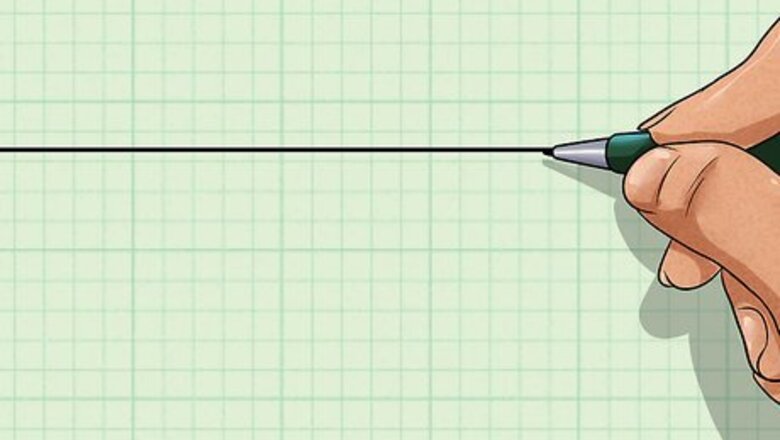
views
X
Research source
Setting Up a Number Line
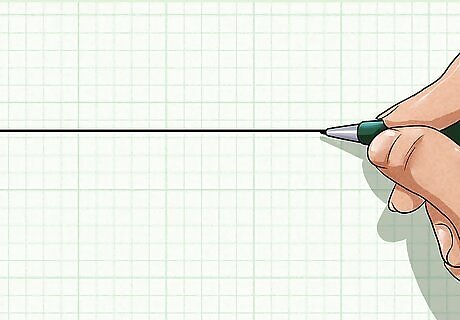
Draw a long line on a piece of paper. This will be the base of your number line. You can draw this in pen or marker, if you want to use your number line over and over again.
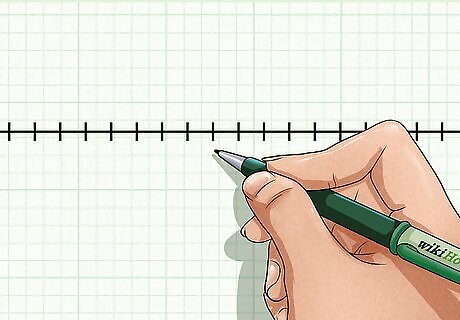
Make hash marks on your line. This will make it look like a train track. You can also make these in pen so you can use the number line for more than one problem.

On the left, start writing numbers above the hashmarks. Start with zero above the first hashmark on the left. At each hashmark, write the next number up. For example, above the hash mark next to zero, write 1. You can write these in pen as well, so you can re-use the number line over and over again.
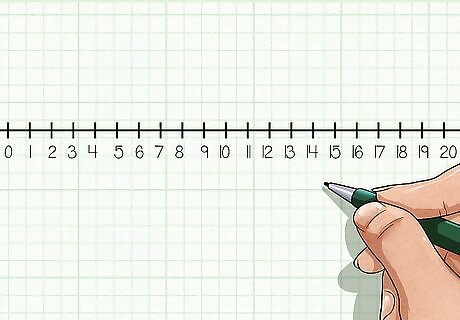
Stop numbering at 20. Remember, doing math problems with numbers over 20 will make this method too hard. Now your number line should read from 0 to 20, going from left to right.
Adding Using a Number Line
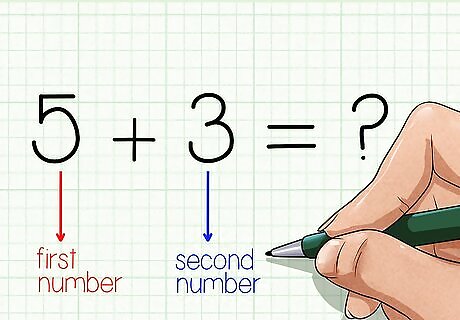
Look at your math problem. Determine which number is first in the problem and which is second. For example, in 5 + 3, the first number is 5 and the second number is 3.
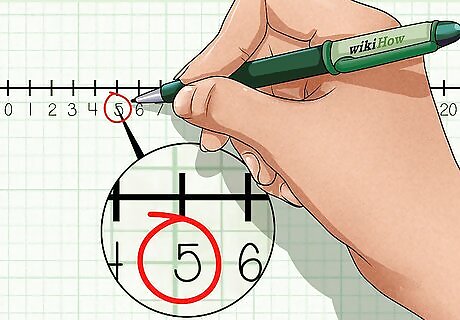
Find the first number of your addition problem on your number line. Put your finger there. This is where you will start counting. For example if your math problem is 5 + 3, you should put your finger on 5 on your number line.
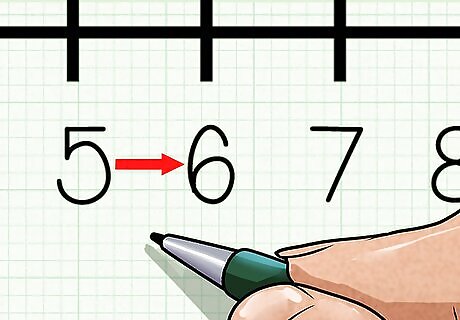
Move your finger to the right to the next hashmark and number. You have now moved 1 space. If you start at 5, when you reach 6, you have moved 1 space.

Move your finger the same number of spaces as the second number in your addition problem, then stop. This will make sure you end on the answer to your problem. Don't move more spaces than the second number in your addition problem. For example, if the second number in your problem is 3, you will move 3 spaces.
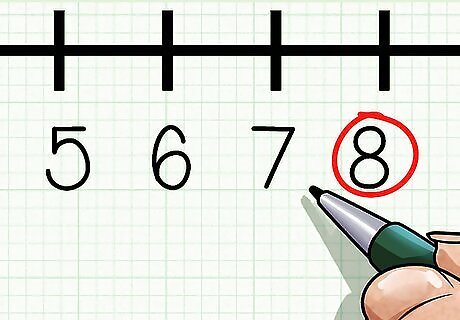
Look to see what number your finger is on now. That is the answer to your math problem. For example, if your math problem was 5 + 3, you would have moved 3 spaces to the right of 5. Your finger would be on 8 on your number line. 5 + 3 = 8.
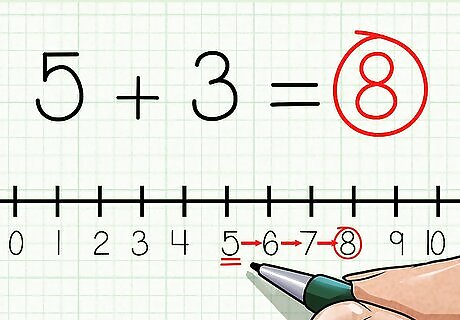
Try the method again to check your answer. This will help you make sure you have the right answer to your math problem. If you come up with a different answer during your check, try again to double check.
Subtracting Using a Number Line
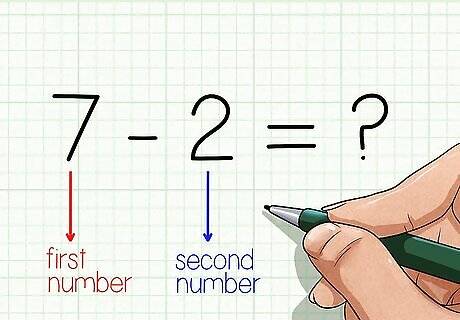
Look at your subtraction problem. Find which number is the first number in the problem and which is second. In the problem 7 - 2, 7 is the first number in the problem and 2 is the second number in the problem.
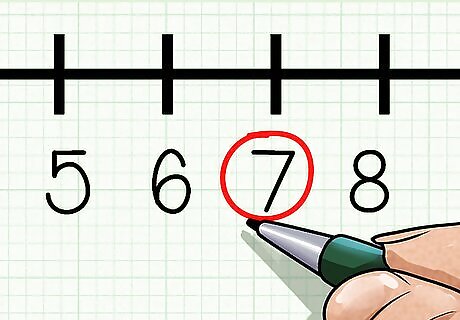
Find the first number of your subtraction problem on your number line. Put your finger there. If your math problem was 7 - 2, you would start by putting your finger on 7 on your number line.
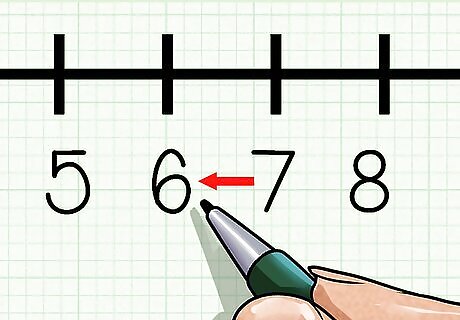
Move your finger to the left to the next hashmark and number. You have now moved 1 space. For example: if you start at 7, when you reach 6, you've traveled 1 space.
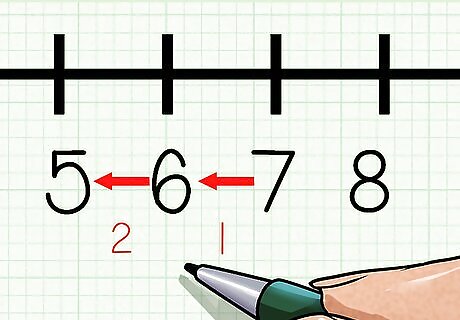
Move your finger the same number of spaces as the second number in your math problem, then stop. This will make sure you end on the answer to your problem. If the second number in your problem is 2, you should have moved your finger to the left two spaces.
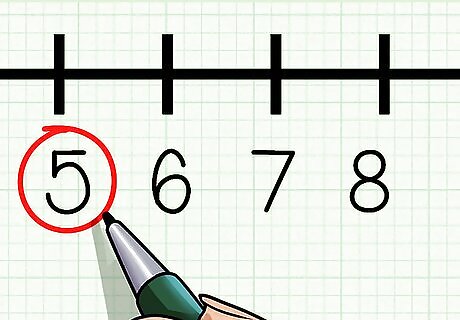
Look to see what number your finger is on now. That is the answer to your subtraction problem. For example, in the problem 7 - 2, you would have started your problem at 7 on your number line. You would have moved 2 positions to the left, ending with your finger on 5 on your number line. 7 - 2 = 5.

Do the method again from the beginning. This is to check your answer. If you get a different result from your check, try again to see where you made a mistake.
Making a Number Line with Negative Numbers

Make a new number line. Start by making a long horizontal line on a piece of paper. This will be the base of your number line.

Make hashmarks on the line. This will make your line look like a train track. You will need to make more hashmarks on the line than for a simple addition/subtraction problem if you are working with negative numbers.
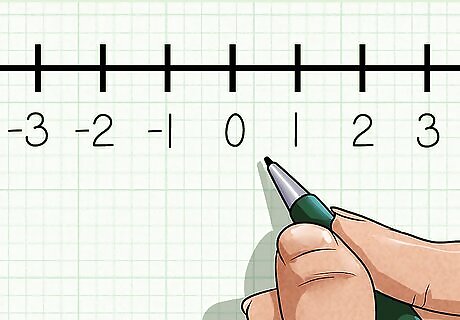
Start numbering your hashmarks. Put zero on the hashmark in the center of your line. Put 1 to the right of zero and -1 to the left of zero. -2 will go to the left of -1 and so on.
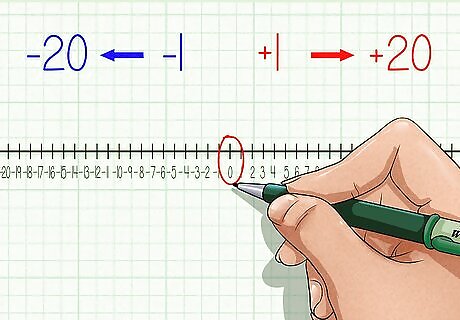
Look at your finished number line. Zero should be in the middle. Try numbering up to 20 on the right and -20 on the left.
Adding With Negative Numbers
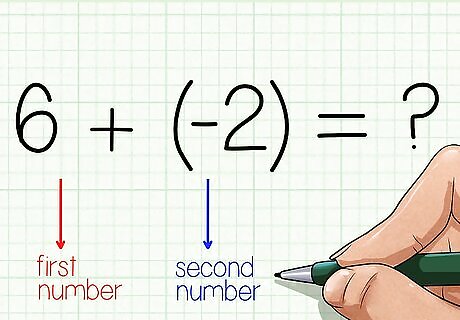
Look at your math problem. Find the first and second numbers in the problem. For example, in 6 + (-2), 6 would be the first number and -2 would be the second.
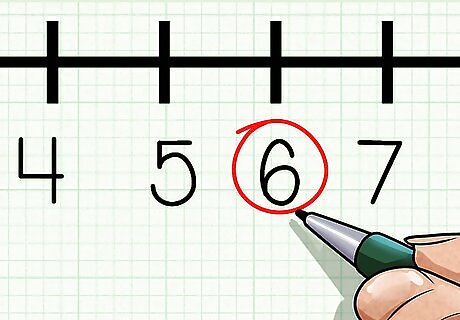
Put your finger on your number line. Put it on the first number in your problem. In 6 + (-2) you would start by putting your finger on 6 on your number line.
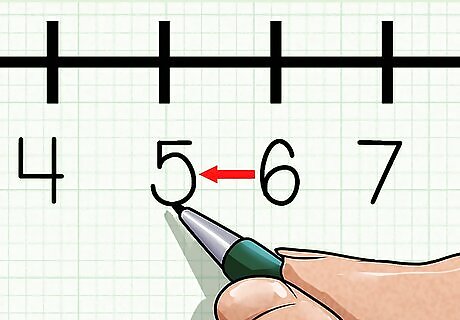
Move your finger to the left to the next hashmark and number. Adding a negative number is very similar to regular subtraction. You have now moved 1 space.
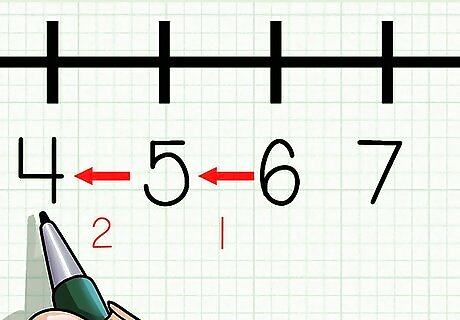
Move your finger to the left the same number of spaces as the second number in your problem, then stop. This will make sure you end on the answer to your problem. For example, if the second number in your problem is -2, you should have moved your finger to the left 2 spaces.
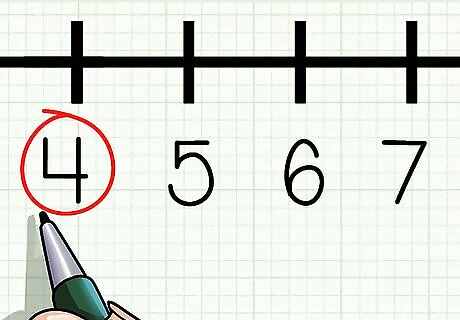
Look to see what number your finger is on now. This is the answer to your addition problem. For example, if your problem was 6 + (-2), you would have started with your finger on 6. You would have moved your finger to the left two spaces, ending on 4. 6 + (-2) = 4.
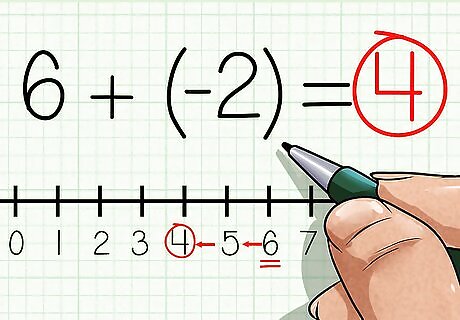
Try the method again. This is to check your answer. If you get an answer when you check your problem, try again to see where you made your mistake.
Subtracting with Negative Numbers
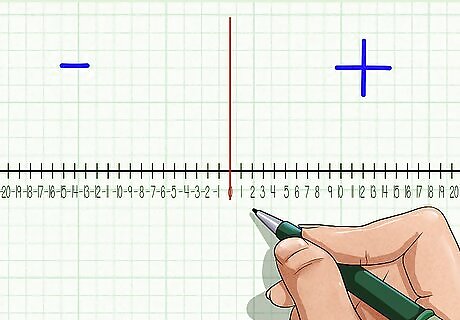
Use your negative number line. You will need numbers less than zero and more than zero. Remember, on your negative number line zero will be in the middle. All the negative numbers will be to the left of zero and all the positive numbers will be to the right of zero.
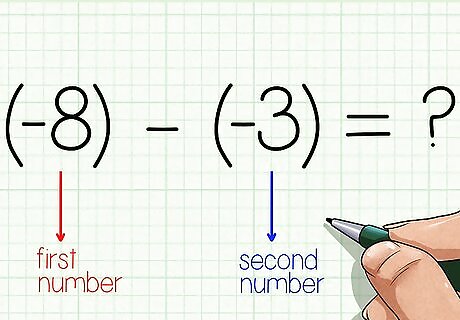
Look at your subtraction problem. Find what number is first and which is second in the problem. For example, in (-8) - (-3), the first number is -8 and the second is -3.
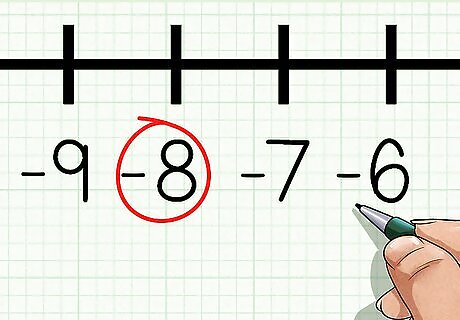
Put your finger on the first number in the problem. This is where you will start. If your problem was (-8) - (-3), you would put your finger on -8 on your number line.
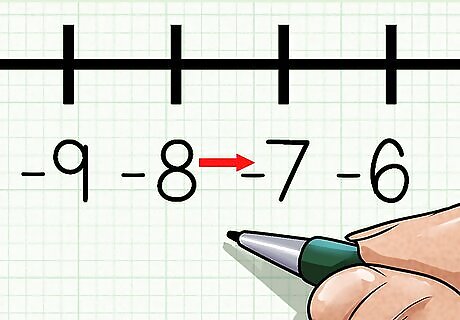
Move your finger to the right to the next hashmark and number. Subtracting a negative number is much like addition with regular numbers. If you started on -8, you should now be on -7. You will have moved one space.

Move your finger the same number of spaces as the second number in your problem, then stop. This will make sure you end on the answer of your problem. For example, if the second number in the problem is -3, you should have only moved 3 spaces on your number line.
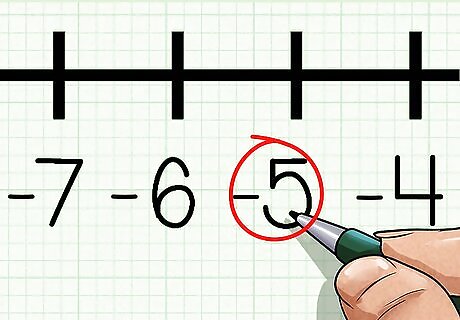
Look where your finger is on your number line. That number is the answer to your subtraction problem. For example, in the problem (-8) - (-3), you would have started with your finger on -8 and would have moved 3 spaces to the right, ending on -5. (-8) - (-3) = -5.

Try the problem again. This is to check your answer. If you don't get the same answer this time, try again to see where you made a mistake. In a test, they always give you something for a reason. When they ask you something, it's for a specific chapter test. Think why some information is there and which specific section it is associated with. For example, you may be given a word problem about the line of sight, and the chapter may be on trigonometry.










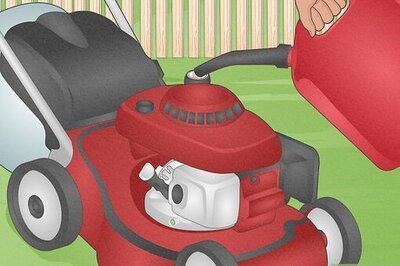
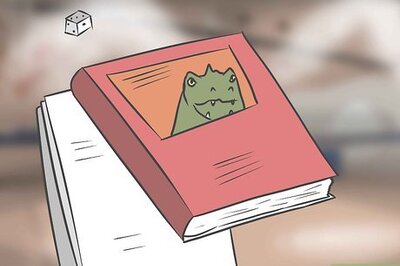







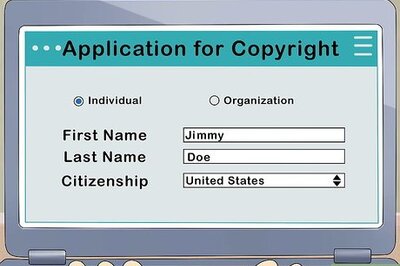
Comments
0 comment